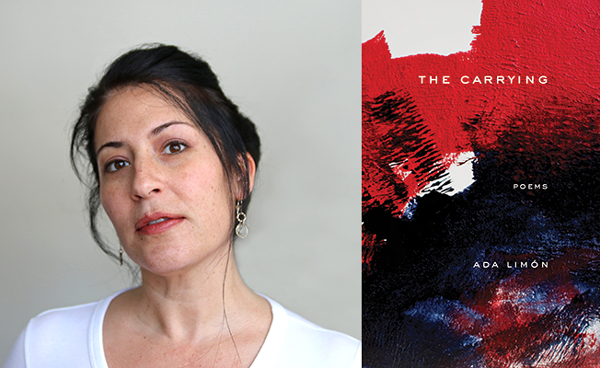

MEXICAN AMERICAN FIRST-GENERATION STUDENTS’ PERCEPTIONS OF SIBLINGS AND ADDITIONAL FACTORS INFLUENCING THEIR COLLEGE CHOICE PROCESS
D Elias McAllister – 2012
… Title of Document: MEXICAN AMERICAN FIRST- GENERATION STUDENTS’ PERCEPTIONS
OF SIBLINGS AND ADDITIONAL FACTORS INFLUENCING THEIR COLLEGE CHOICE PROCESS …
choice process of Mexican American first-generation students who had an older …
Link to dissertation
The workers’ camp versus Main Street: then and now in the Mexican-American neighborhoods of the non-metro Midwest
S Dieterlen – Journal of Urbanism: International Research on …, 2012
… characteristics that support this idea include the very high percentages of Mexican-American/
Spanish-language businesses and institutions, their adherence to local non-Hispanic white
appearance standards, the specialized businesses and professional services, the low …
Link to article
Use of Alternative Medicine for Weight Loss Among Mexican-American Women
NM Lindberg, VJ Stevens, C Elder, K Funk… – Journal of Immigrant and …, 2012
… Mexican-American women report using a wide range of CAM therapies for weight
loss. Under- standing their patterns of use will enhance cultural com- petence of health
care professionals and help address their medical needs. …
Link to abstract
New Spanish immersion program in Mexico, offers to take advantage of the Trans-Pacific Partnership (TPP)
San Francisco Chronicle
It’s obvious the bilateral relationship between Mexico and the United States is stronger than ever, but this will have impacts in both economies and cultures and a mexican Spanish school offers a competitive advantage for American professionals. Aiming …
See all stories on this topic »
Link to article
Effects of acculturation and ethnic identity level on ego identity development in second-generation Mexican American adolescents
AT Seminary,by Marisol Solarte Erlacher
… 27 State of Colorado, adolescents 15 years or older “may consent to receive mental health service
to be rendered by a facility or a professional person” (CRS 27-10-103). … All participants fit the
previously given criteria for second generation Mexican American. …
Link to thesis
Experience of Mexican-American Elders with Diabetes: A Phenomenological Study
EP Haltiwanger – Occupational Therapy in Health Care, 2012
… Complicating matters is the fact that health professionals may not feel comfortable
dealing with the psychosocial issues. … (2007) found that levels of distress were higher
than clinical depression in Mexican-American adults age 18–65.
Link to abstract
Empowering Young People to Be Critical Thinkers: The Mexican American Studies Program in Tucson
C Acosta… – Education for Liberation, 2012
… The Mexican American Student Services Team offers professional development meetings
throughout the school year; the Mexican American Student Services Summer Institute is a
four-day conference that provides Chicana/o studies-based lessons and units to implement at …
Link to article
Legally White, Socially “Mexican”: The Politics of De Jure and De Facto School Segregation in the American Southwest
R Donato… – Harvard Educational Review, 2012
… It carefully circumvented the issue of race and allowed the school district to segregate Mexican
American children based on their purported educational needs. The Salvatierra decision found
a way to dismiss race and defer to local educational professionals and their …
Link to abstract
David Ramirez, Attorney at Law
 David M. Ramirez, since 2010, is of Counsel with the Sacramento bankruptcy law firm of Anthony Hughes, LLC. He earned his Bachelor of Arts and Doctor of Jurisprudence degrees at Stanford University. He has had two successful careers. His current work builds on his first career as a dedicated legal professional with more than twenty years of legal experience, including more than 30 jury trials, over 100 bench trials, as well as significant appellate experience and administrative law experience [Published opinion in De La Cuesta vs. Fidelity Federal Savings and Loan Assoc, (1981) 121 Cal. App. 3d 328 (175 Cal.Rptr. 467)]. He has litigated more than 20 administrative proceedings, including professional licensee hearings, one of which lasted more than 40 court days. He is highly skilled at dealing with diverse client and witness populations. As a team member, he is willing to go the extra mile to accomplish the mission set for the team. When in a leadership role, his leadership style is to take care of the team while the team takes care of the mission.
David M. Ramirez, since 2010, is of Counsel with the Sacramento bankruptcy law firm of Anthony Hughes, LLC. He earned his Bachelor of Arts and Doctor of Jurisprudence degrees at Stanford University. He has had two successful careers. His current work builds on his first career as a dedicated legal professional with more than twenty years of legal experience, including more than 30 jury trials, over 100 bench trials, as well as significant appellate experience and administrative law experience [Published opinion in De La Cuesta vs. Fidelity Federal Savings and Loan Assoc, (1981) 121 Cal. App. 3d 328 (175 Cal.Rptr. 467)]. He has litigated more than 20 administrative proceedings, including professional licensee hearings, one of which lasted more than 40 court days. He is highly skilled at dealing with diverse client and witness populations. As a team member, he is willing to go the extra mile to accomplish the mission set for the team. When in a leadership role, his leadership style is to take care of the team while the team takes care of the mission.
Prior to joining the Hughes firm, David M. Ramirez also had an encore career in educational management. He recently retired from the California educational system after having served as a teacher and administrator in some of the nations toughest inner city schools, Oakland Military Institute, and Calvin Simmons Middle School. He has contributed to the Mexican American Community by his work on the admissions committee for Oakland Military Institute where he promoted the admission of many Mexican American cadets and by his service as Vice Principal at Calvin Simmons Middle School, which was the only Oakland Middle school in 2005 which had a majority Mexican American student population. He earned the Association of California School Administrators [ACSA] El Dorado Charter ADMINISTRATOR OF THE YEAR for 2008-2009 ACSA and the El Dorado Charter DISTINGUISHED SERVICE AWARD for 2008-2009.
He also served in California State Military Reserve of the California National Guard, Major, as a Staff Judge Advocate, assigned to 100 the Combat Command Support Group, in 2006-2008, and as infantry officer, California Cadet Corp 2002-04.
David M. Ramirez is the author of “Guerrilla Speech Tactics” available on Amazon.com and has dedicated half of all book proceeds to the Wounded Warriors Project.
Cultural Adaptation of a Cognitive Behavior Therapy Guided Self-Help Program for Mexican American Women With Binge Eating Disorders
M Shea, F Cachelin, L Uribe, RH Striegel… – Journal of Counseling & …, 2012
… Mexican American women who suffer from binge-eating-related disorders often report wanting
help for their eating problems, yet they rarely seek professional treatment because of personal
and institutional barriers (Cachelin & Striegel-Moore, 2006). …
Link to abstract
Mexican American Female Adolescents’ Perceptions of Relationships and Dating Violence
K Haglund, RA Belknap… – Journal of Nursing Scholarship, 2012
… Clinical Scholarship. Mexican American Female Adolescents’ Perceptions of Relationships and
Dating Violence. … How to Cite. Haglund, K., Belknap, RA and Garcia, JT (2012), Mexican American
Female Adolescents’ Perceptions of Relationships and Dating Violence. …
Link to abstract
Women, Chefs and Professional Kitchens
Huffington Post (blog)
Heather Carlucci, chef at Print restaurant, Mona Talbott, founding director of the Rome Sustainable Food Project at the American Academy in Rome, Cheryl Smith, chef at Cheryl’s Global Soul, and Sue Torres, chef and owner at Sueños restaurant, …
Link to article
Lowrider Space: The Material Poetics and Spatial Politics of Mexican …
B Chappell – 2012
… Library of Congress Cataloging-in-Publication Data Chappell, Ben, 1971–- Lowrider space :
aesthetics and politics of Mexican American custom cars / Ben … x lowrider space come a
professional one, thanks especially to the family of Julio Chulín in Ix- tacomitán, Tabasco; the …
Link to book
Socioeconomic status and stress in Mexican–American women: a multi-method perspective
LC Gallo, S Shivpuri, P Gonzalez, AL Fortmann… – Journal of Behavioral …, 2012
… 0–8th grade, some high school (no diploma), high school graduate, some college, 4 year col-
lege degree, graduate or professional degree. … The scales were developed and validated in a
population-based sample of Mexican–American adults aged 25–64 years (Hazuda et al …
Link to abstract
Counter Intelligence: Bizarra Capital, a dreamland Mexican-style gastropub
Los Angeles Times
Like cleaning tripe or boning out whole chickens for ballotines, the preparation of huazontle is clearly best left to professionals. Bizarra Capital is a Mexican-flavored gastropub, the newest project of Ricardo Diaz, who is also behind the sandwich …
Link to article
Concepts of diabetes self-management in Mexican American and African American low-income patients with diabetes
EB Lynch, A Fernandez, N Lighthouse… – Health Education Research, 2012
… Concepts of diabetes self-management in Mexican American and African American
low-income patients with diabetes. … Relative to African Americans, Mexican American
participants were less educated and less likely to have health insurance. …
Link to abstract
Mexican-American and Puerto Rican Breast Cancer Survivors’ Perspectives on Exercise: Similarities and Differences
RA Treviño, L Vallejo, DC Hughes, V Gonzalez… – Journal of Immigrant and Minority …
… Table 1 Mexican-American Participant Characteristics Participant characteristics* … had completed
active treatment reported having sought help from other cancer survivors, personal supporters,
or from the internet in lieu of receiving information from health care professionals (Fig …
Link to abstract
USD Trains Mexican Lawyers For New Criminal Trial Process
Fronteras: The Changing America Desk
In the Tijuana hotel, law students from all over the state are preparing for a mock trial competition with their Mexican and American peers. There’s been plenty of resistance to this new way of running criminal trials among Mexican law professionals
Link to article
Consulate seeks to honor notable Mexicans in S.D. County
U-T San Diego
The Consulate of Mexico in San Diego plans to honor Mexicans and Mexican-Americans who have contributed to this region as part of its 133rd year in San Diego and the 150th anniversary of the Battle of Puebla. It is seeking nominations through May 31 …
Link to article
A fresh approach to copyright works wonders
iTWire
Back in December, the Mexican-American stand-up comedian Louis CK did something that was way out of left field. He had one of his shows recorded by professionals and put it online for sale. No big companies involved, no trimmings. And no DRM.
Link to article


